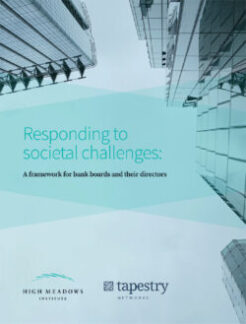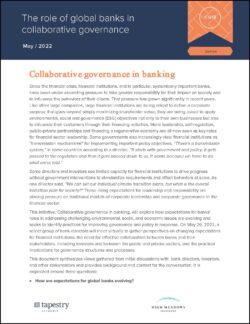Since the financial crisis, financial institutions, and in particular, systemically important banks, have been under escalating pressure to take greater responsibility for their impact on society and to influence the behaviors of their clients. That pressure has grown significantly in recent years. Like other large companies, large financial institutions are being asked to define a corporate purpose that goes beyond simply maximizing shareholder value; they are being asked to apply environmental, social and governance (ESG) objectives not only to their own businesses but also to influence their customers through their financing activities. Some governments also increasingly view financial institutions as “transmission mechanisms” for implementing important policy objectives.
Collaborative Governance in Banking, a project in collaboration with Tapestry Networks, explored how expectations for banks’ roles in addressing challenging environmental, social, and economic issues are evolving and sought to identify practices for improving governance and policy in response.




